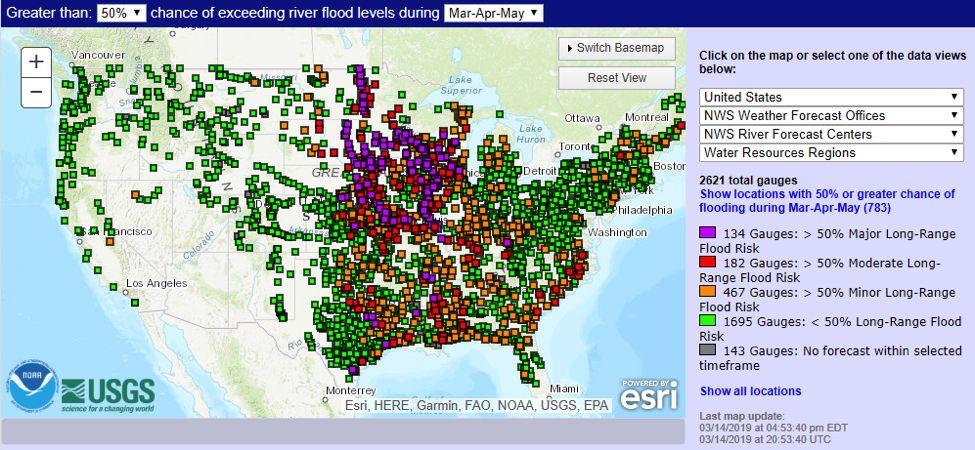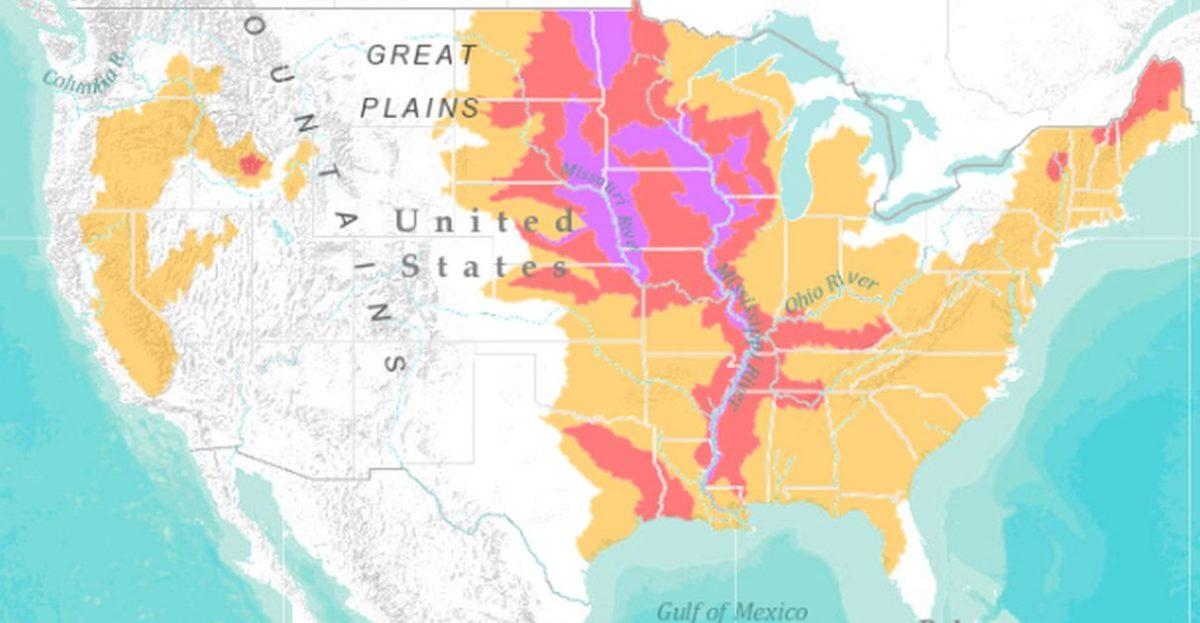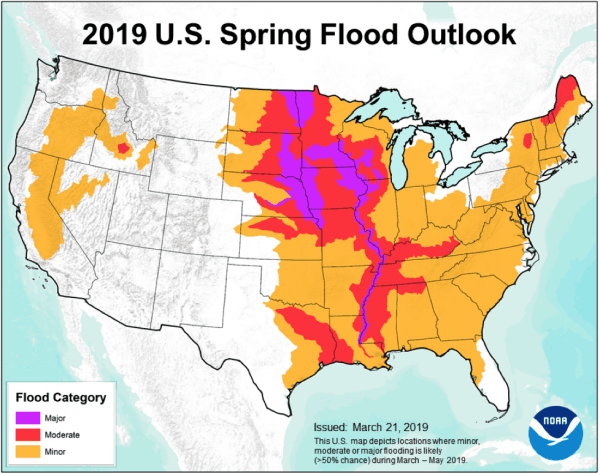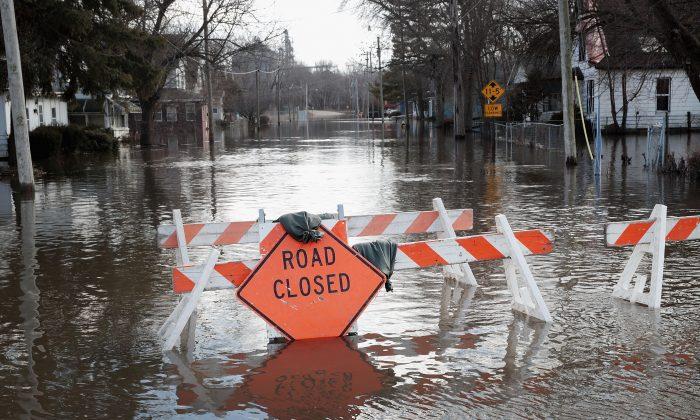The Midwest and South could face “potentially unprecedented” flooding until the end of spring, warned a U.S. weather agency.
The Midwest, however, might get slammed, particularly around the Mississippi River Basis and the Missouri River Basin.

“This winter has brought above to much above normal precipitation to much of the United States. Several portions of the country received accumulated precipitation exceeding 200% of average to date,” the agency said.
Over the past several weeks, the Mississippi and Missouri River basins in Nebraska, Iowa, and Minnesota have endured heavy flooding, NOAA said.
“Heavy rainfall mid-February through mid-March brought flooding across much of the Mississippi River Basin and its tributaries. Heavy rainfall on snow in mid-March brought significant flooding - including record flooding - to the Lower Missouri River Basin,” the NOAA said.

The NOAA listed the river basin with an elevated risk of flooding for the spring: The Upper, Middle, and Lower Mississippi River, lower Missouri, Red River of the North, Lower Ohio, Lower Cumberland, and Tennessee River basins.
Moderate flooding could occur in the St. John, Penobscot, and Upper Hudson River basins, the NOAA said
“Minor flooding is expected across much of the region east of the Mississippi River, as well as the Pacific Northwest, and Sierra Nevada basins. Minor to isolated moderate flooding is also projected for the central Idaho tributaries to the Snake River as follows: the Big Lost, Wood, Upper Boise, Payette, and Weiser River basins,” according to the agency.
Heavy snowpack in the Dakotas and Minnesota is expected to send more water down the Missouri, Mississippi, Cumberland, Ohio, and Tennessee rivers as the snow melts.

The agency makes its flood risk outlook based on snowpack, soil moisture, rainfall, frost depth, and drought.
“Local heavy rainfall, especially associated with thunderstorms, can occur throughout the spring and lead to flooding even in areas where overall risk is considered low,” the agency said. “In the western U.S., snowpacks at higher elevations may continue to build over the next month, and the flood risk will depend on future precipitation and temperatures.”
Minor Flooding: Minimal or no property damage, but possibly some public threat (e.g., inundation of roads).
Moderate Flooding: Some inundation of structures and roads near stream. Some evacuations of people and/or transfer of property to higher elevations.
Major Flooding: Extensive inundation of structures and roads. Significant evacuations of people and/or transfer of property to higher elevations.






Friends Read Free